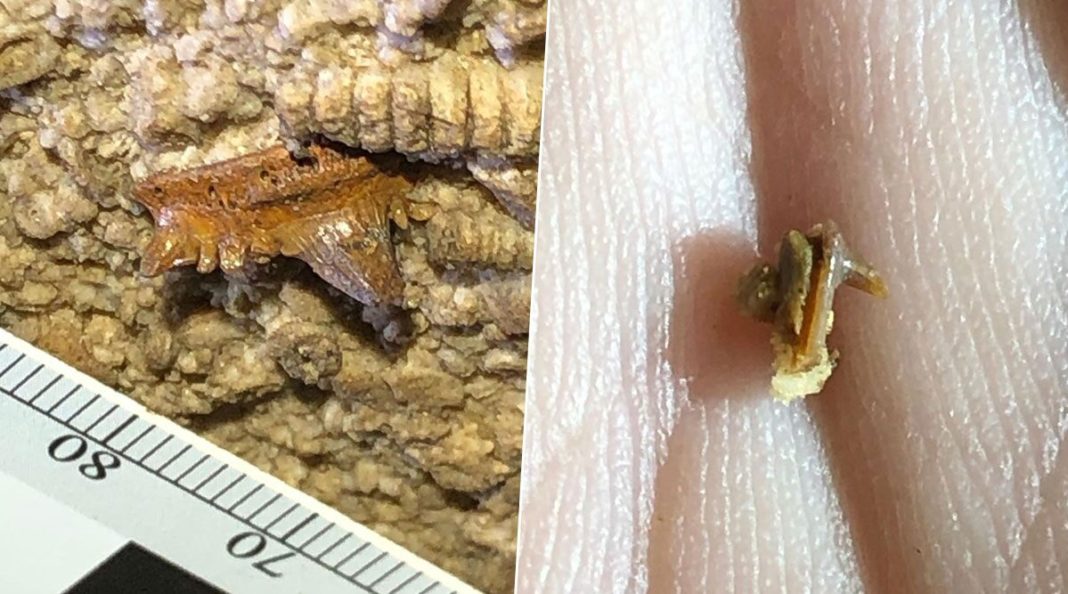Researchers were “stunned” when they discovered the remnants of a huge, fossilized shark head in the walls of a cave in Kentucky. The remains of the ancient animal were found in Mammoth Cave National Park, which according to the National Park Service is the world’s longest cave system.
The shark fossil, which was discovered by scientists who were investigating the cave system, is thought to be up to about 330 million years old, according to John-Paul Hodnett, a paleontologist and program coordinator at Dinosaur Park in Maryland.
The scientists sent Hodnett photos of the findings so he could help identify them. He was able to identify most of the fossils, but what got him “really excited” was to see a number of shark teeth associated with large sections of fossilized cartilage.
“This was kind of a big deal,” he said. “It suggested there might have been a shark skeleton in the cave.”
Shark skeletons are made of cartilage, which does not fossilize as well as bone — so it is rarely preserved. Preserved cartilage can only be found in a few select locations around the world.
Shark teeth, on the other hand, are among the most common fossils found around the planet since they are replaced throughout the animal’s life.
Hodnett eventually visited the park to examine the fossils, and while he did not uncover a full skeleton, he found parts of a head that belonged to a prehistoric shark, which he said was the size of a modern great white shark.
Based on what was exposed in the cave wall, he identified a 2 ½-foot-long lower jaw, teeth, and other cartilage belonging to this one large shark and around 100 extremely detailed teeth of other shark species.
“What we saw in the cave was amazing because just from the shape of the jaw we’ll be able to find out more about how this species lived and we’ll be able to fit it in the shark family tree more accurately,” Hodnett said.
The team determined the shark belonged to a species called Saivodus striatus, which lived during the Late Mississippian geological period, more than 330 million years ago.
The majority of the shark fossils discovered by the researchers come from a layer of rock that extends from Missouri to Virginia. However, this is the first time the presence of sharks has been documented.
“Mammoth Cave has a rich fossil shark record and there’s still much more to uncover,” Hodnett said.













![Hotstar Premium Cookies 2019 [*100% Working & Daily Updated*] Hotstar Premium Cookies 2019 [*100% Working & Daily Updated*]](https://tahav.com/wp-content/uploads/2019/11/Hotstar-Premium-Cookies-Free-100x70.jpg)



